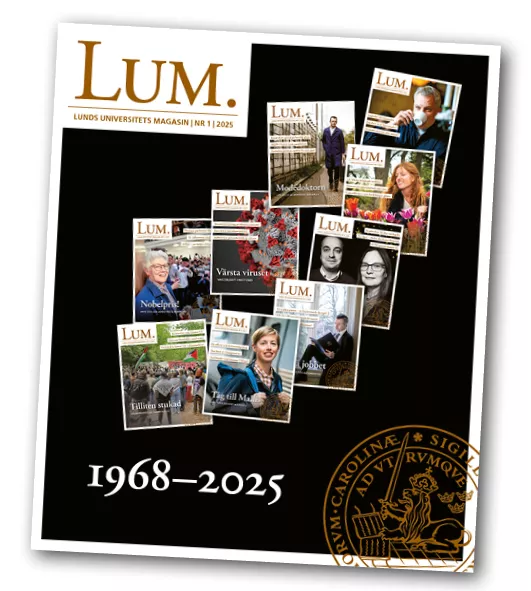Things get a little trickier when the owlet is to be measured, weighed and swabbed for bacterial samples from both front and behind. Finally, a little prick with a needle to see whether it is a male or female, and whether the mice served up for dinner by the owl parents had eaten rat poison.
The view over the slopes covered with wood anemones in the grove of beech trees outside Torna Hällestad is like something out of a pastoral 19th-century painting. Here, researchers Johan Nilsson and Hannah Watson have placed one of around 170 owl nesting boxes included in their multiyear project aiming to find out as much as possible about how tawny owls are affected by living in proximity to humans.
On this particular morning, they want to see what is concealed in the nesting box in the beech glade. They already know from previous visits that there are two owlets in the nest, but not which of the parents is taking care of the owlets this time. The presence of owlets in a nesting box is unusual this year. Last year, 35 pairs of owls nested in the 170 boxes; this year there are 21 nesting pairs and owlets have hatched in only 11 boxes. Johan Nilsson and Hannah Watson believe that the reason is a shortage of mice and other rodents which makes it difficult for the owls to find food. The shortage of rodents is, in turn, probably due to the first four months of the year being cold.
It is thanks to technology that Nilsson knows for certain that an adult owl is in the nest when he climbs the ladder. The previous evening, he received an SMS when the trap mounted on the outside of the box closed. The trap looks like a tunnel a few decimetres long, with a grate at its opening. A little further in is a pedal that the owl steps on, causing the grate to drop down and close behind it. In the same instant, a microcomputer sends an SMS to the researchers.
"It's the male and the owlets", reports Johan Nilsson from the top of the ladder as he lifts the nesting box roof.
His certainty that it is the father owl in the box depends on the size of the bird. The male weighs significantly more than the female. In the case of this owl family, there is a difference of around two hundred grams, a major difference considering that the male owl weighs in at 454 grams on this day. In addition, he has lost weight since the last time they weighed him.
"The male's job is to get food for the owlets and that is demanding. The female is more the one who stands guard", explains Hannah Watson.
The adult individuals in the project have been fitted with tiny GPS trackers. On this day, the two researchers remove the male owl's GPS. The trap will remain until they have got hold of the female and her GPS. It is thanks to these tiny devices that Nilsson and Watson know that the tawny owls can benefit from living in proximity to humans.
"It is easier for them to find food on farms and in villages because there are more rats and mice around. When they hunt, they also use various structures in nature that humans have created. These can be fences or a line of trees along an open field where they can sit and watch for prey", explains Nilsson, pointing out that it is not always an advantage for the owls to look for prey close to humans.
"Many owls ingest rat poison, which we know from observing that a high proportion of dead tawny owls have rat poison in their bodies, but we don't know whether the poison is the cause of death".
And speaking of watchfulness; according to the researchers, the female who was invisible to LUM's reporter during the hours spent in the beech wood had been keeping a close eye on us all the time. Hannah and Johan explain that they always work together out in the field, never alone.
"There is a risk that the owls might attack if we worked alone. You cannot hear anything when they swoop down on you and their claws are razor-sharp", says Hannah Watson.





